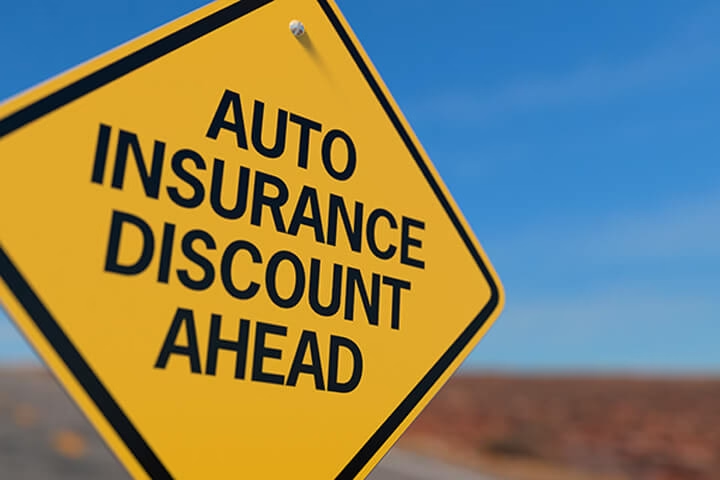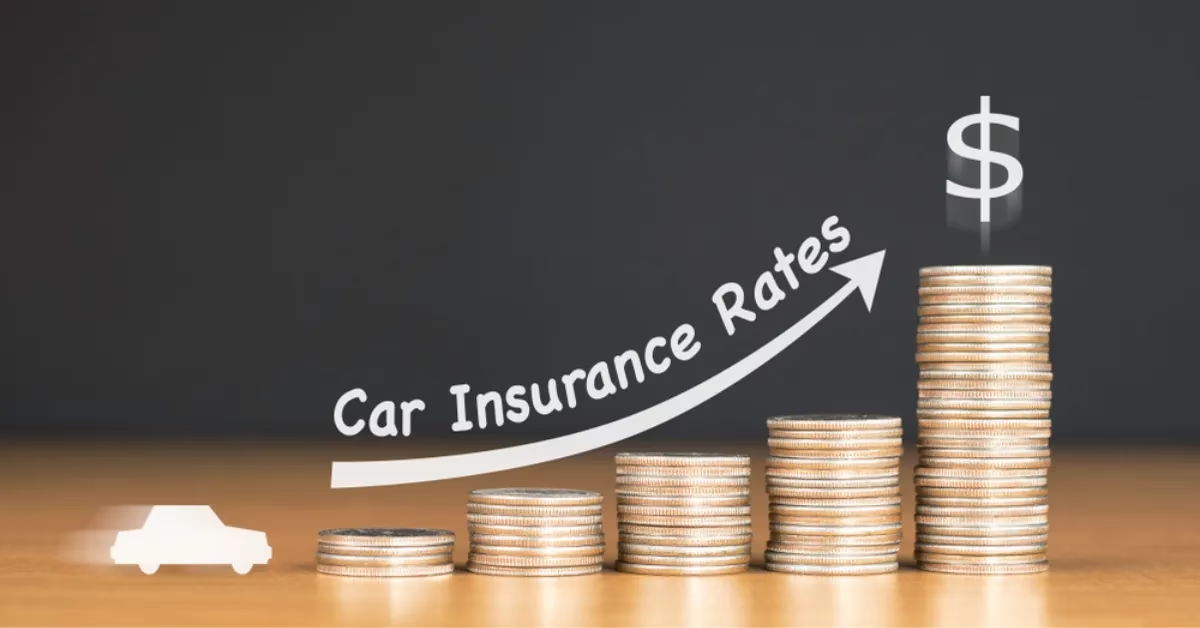Did you know that drivers under 25 are three times more likely to be involved in an accident compared to older drivers? This statistic highlights the importance of securing the right coverage early on. Without proper protection, you could face significant financial risks.
Finding affordable Car Insurance for Young Drivers can feel overwhelming, especially with higher premiums for inexperienced drivers. However, there are practical solutions to help you balance cost and coverage. Programs like telematics or multi-car discounts can make a big difference.
Proactive planning isn’t just about saving money—it’s about safeguarding your future. By making smart choices now, you can ensure long-term financial safety and peace of mind.
Key Takeaways
- Drivers under 25 face higher risks and costs.
- Telematics programs can help reduce premiums.
- Multi-car discounts are a practical way to save.
- Balancing affordability and coverage is essential.
- Smart policy choices protect your financial future.
Why Car Insurance is Essential for Young Drivers
Navigating the road as a new driver comes with unique challenges. While driving offers freedom, it also involves significant responsibilities. Understanding the risks and legal requirements is crucial to protecting yourself and others.
The Risks Young Drivers Face
Statistics show that teens are three times more likely to be involved in a crash compared to drivers over 20. Inexperience, distractions, and risky behaviors contribute to these higher accident rates. Being aware of these risks can help you make safer choices behind the wheel.
Accidents not only pose physical dangers but also financial ones. Without proper coverage, you could face hefty out-of-pocket expenses for repairs, medical bills, or legal claims. Protecting yourself with the right policy ensures you’re prepared for the unexpected.
Legal Requirements in the United States
In the U.S., 49 states require liability coverage to legally drive. This type of policy helps cover costs if you’re at fault in an accident. Minimum coverage amounts vary by state, so it’s important to know your local requirements.
Driving without insurance can lead to severe penalties, including fines, license suspension, or even vehicle impoundment. Staying compliant not only keeps you legal but also safeguards your financial future.
| State | Minimum Liability Coverage |
|---|---|
| California | $15,000/$30,000/$5,000 |
| Texas | $30,000/$60,000/$25,000 |
| New York | $25,000/$50,000/$10,000 |
| Florida | $10,000/$20,000/$10,000 |
Additionally, some states like Hawaii and Massachusetts prohibit gender-based pricing, which can impact rates until age 25. Understanding these factors helps you make informed decisions when choosing a policy.
Understanding Car Insurance for Young Drivers
Choosing the right protection for your vehicle is a critical step in securing your financial future. With so many options available, it’s important to know what each type of policy offers and how it can benefit you. Let’s break down the essentials to help you make informed decisions.
Types of Coverage Available
There are six main types of protection you should consider when selecting a policy:
- Liability Coverage: Covers damages to others if you’re at fault in an accident.
- Collision Coverage: Pays for repairs to your vehicle after a crash.
- Comprehensive Coverage: Handles non-crash incidents like theft or natural disasters.
- Uninsured/Underinsured Motorist (UM/UIM): Protects you if the other driver lacks sufficient coverage.
- Rental Reimbursement: Covers the cost of a rental car while your vehicle is being repaired.
- Roadside Assistance: Provides help for emergencies like flat tires or towing.
Minimum Coverage vs. Full Coverage
Minimum coverage meets state requirements but may leave you underprotected. For example, it typically includes liability but excludes collision and comprehensive. Full coverage, on the other hand, offers broader protection but comes at a higher cost.
“Minimum coverage is like wearing a seatbelt—it’s essential but not always enough. Full coverage is the airbag that provides extra safety.”
Here’s a comparison of average annual costs:
| Coverage Type | Minimum Coverage Cost | Full Coverage Cost |
|---|---|---|
| Liability | $500 | $500 |
| Collision | Not Included | $600 |
| Comprehensive | Not Included | $300 |
Lenders often require full coverage for leased or financed vehicles. Additionally, scenarios like severe weather or high theft areas make comprehensive protection a smart choice. Analyzing the cost-benefit of added protections like rental reimbursement can help you decide what’s best for your needs.
Factors Affecting Car Insurance Rates for Young Drivers
Several key elements determine how much you’ll pay for coverage. From your age to the type of vehicle you drive, these factors shape your premiums. Understanding them can help you make smarter choices and potentially lower your cost.
Age and Experience
Your age plays a significant role in determining your insurance rates. For example, 25-year-olds typically see a 45% drop in premiums compared to 16-year-olds. This is because older drivers are viewed as less of a risk due to their experience on the road.
If you’re a new driver, don’t worry—your rates will improve over time. Staying accident-free and building a clean history can speed up this process.
Driving History and Accident Records
Your past behavior behind the wheel directly impacts your premiums. At-fault accidents can lead to significant rate increases. On the other hand, maintaining a clean record can help you qualify for discounts.
In some states, your credit history also affects your cost. A good credit score can lower your premiums, while a poor one may raise them.
Vehicle Type and Usage
The vehicle you drive matters. Sports cars, for instance, can increase premiums by 22% compared to sedans. This is because they’re often associated with higher risk and repair costs.
Your usage also plays a role. Tracking your mileage through telematics devices can help you save money. Programs like Lemonade’s safety scoring system reward safe driving habits with lower rates.
Additionally, being designated as the primary driver of a vehicle can affect your premiums. Make sure to accurately report your usage to avoid unexpected costs.
How to Find Affordable Car Insurance for Young Drivers
Securing affordable coverage doesn’t have to be a daunting task. With the right strategies, you can lower your costs significantly while maintaining the protection you need. Let’s explore practical ways to achieve this.
Comparing Quotes from Multiple Providers
One of the most effective ways to save is by comparing quotes from different companies. Tools like Insurify or The Zebra make this process quick and easy. These platforms allow you to view multiple options side by side, helping you find the best price.
The Triple-I recommends getting at least three quotes before making a decision. This ensures you’re not overpaying for your policies. Regional insurers may offer competitive rates compared to national carriers, so don’t overlook them.
Utilizing Discounts and Special Offers
Discounts can make a big difference in your premiums. Here are seven common ones to consider:
- Multi-policy discount: Bundle your auto policy with renters or home insurance.
- Good student discount: Maintain a high GPA to qualify.
- Defensive driving discount: Complete an approved course.
- Multi-car discount: Insure multiple vehicles under one policy, like Nationwide’s offer.
- Hybrid/Electric vehicle discount: Save 10% with companies like Lemonade.
- Alumni or occupational discounts: Check if your school or employer has partnerships.
- Affinity group discounts: Membership in certain organizations may qualify you.
Additionally, paying annually instead of monthly can save you over $120 per year. Programs like Nationwide’s accident forgiveness can also protect your rates after a minor incident.
| Discount Type | Potential Savings |
|---|---|
| Multi-policy | Up to 25% |
| Good Student | Up to 15% |
| Defensive Driving | Up to 10% |
| Multi-car | Up to 20% |
By combining these strategies, you can significantly reduce your car insurance costs and achieve the savings you deserve.
Tips for Lowering Your Car Insurance Premiums
Reducing your premiums is easier than you think with the right strategies. By focusing on a few key areas, you can achieve significant savings while maintaining the coverage you need. Let’s explore some practical steps to help you get started.
Maintaining a Clean Driving Record
Your driving history plays a major role in determining your insurance rates. Avoiding traffic violations and accidents can keep your premiums low. Here’s how:
- Understand point systems for violations in your state.
- Take advantage of grace periods for first offenses.
- Complete defensive driving courses to remove points from your record.
Telematics programs, like Nationwide SmartRide, can also help. These apps track your habits and reward safe driving with lower rates—up to 30% in some cases.
Taking Advantage of Good Student Discounts
If you’re a student, maintaining good grades can lead to big savings. Many providers offer good student discounts for B-average or higher. Here’s what you need to know:
- Provide proof of your GPA through report cards or transcripts.
- Check with your provider for specific eligibility requirements.
- Save up to 15% on your premiums with this discount.
Choosing a Safe and Reliable Vehicle
The type of vehicle you drive impacts your rates. Safer models with advanced safety features often qualify for lower premiums. Consider these options:
- Honda CR-V: Known for its reliability and safety ratings.
- Subaru Outback: Offers excellent crash test scores and all-wheel drive.
Regular maintenance can also prevent claims and keep your costs down. Stick to a schedule for oil changes, tire rotations, and brake inspections.
By following these tips, you can take control of your expenses and enjoy the benefits of lower premiums. Start implementing these strategies today to see the difference.
Adding a Young Driver to an Existing Policy
Adding a teen to an existing policy can be a smart financial move. It’s often more affordable than purchasing a standalone plan. For example, the average cost of adding a teen to a parent’s policy is around $1,500, compared to $2,800 for a separate plan.

Pros and Cons of Adding to a Parent’s Policy
There are several benefits to adding a teen to a parent’s policy. First, it’s usually cheaper. Second, it simplifies management since all vehicles are under one plan. Third, it may qualify you for a multi-car discount.
However, there are some drawbacks. Parents’ premiums may increase significantly. Additionally, any accidents caused by the teen could impact the parents’ claim history. It’s important to weigh these factors before making a decision.
Steps to Add a Teen Driver
Adding a teen to your insurance is a straightforward process. Here’s what you’ll need:
- A valid driver’s license or permit for the teen.
- Social Security number (SSN) for identification.
- Vehicle title or registration details.
Once you have the necessary documents, contact your provider to update your policy. Some companies, like Nationwide, offer streamlined processes for adding teen drivers. Be sure to notify your DMV and insurer within the required timeline to avoid coverage gaps.
By following these steps, you can ensure your teen is covered while maximizing your savings.
Understanding the Role of Telematics in Car Insurance
Telematics is transforming how policies are tailored to individual habits. By tracking your behavior on the road, these programs offer a personalized approach to coverage. This technology not only helps you save money but also encourages safer habits.
How Usage-Based Insurance Works
Usage-based programs rely on data collected through devices like OBD-II trackers or smartphone apps. These tools monitor behaviors such as braking, acceleration, and phone use. Here’s how it works:
- Install an OBD-II device or download a compatible app.
- Drive as usual—your habits are tracked in real-time.
- Receive a safety score based on your performance.
Major programs like Allstate Drivewise and State Farm Drive Safe use this data to adjust your premiums. For example, a safe driver could save up to $450 annually.
Benefits of Telematics for Young Drivers
For new drivers, telematics offers a chance to prove their safety and reduce risk. Programs like Nationwide SmartRide reward good habits with discounts of up to 30%. Here are some key advantages:
- Lower premiums based on actual driving behavior.
- Feedback to improve skills and avoid accidents.
- Potential to offset higher rates often associated with inexperience.
“Telematics gives young drivers control over their premiums by rewarding safe habits.”
However, privacy concerns exist. Insurers use data to calculate rates, so it’s important to understand their policies. Most companies anonymize information and allow you to opt out.
To improve your telematics score, focus on smooth braking, consistent speeds, and avoiding distractions. Over time, these habits can lead to significant savings and better coverage options.
Exploring Optional Coverages for Young Drivers
Exploring additional protection options can enhance your safety on the road. While basic policies meet legal requirements, optional coverages provide extra layers of security. These add-ons ensure you’re prepared for unexpected situations, from accidents to natural disasters.
Collision and Comprehensive Coverage
Collision coverage helps pay for repairs if your vehicle is damaged in an accident, regardless of fault. This is especially useful for newer or high-value vehicles. On the other hand, comprehensive coverage protects against non-collision incidents like theft, vandalism, or weather-related damage.
For example, if your vehicle is damaged by hail or a flooded engine, comprehensive coverage can cover the repair costs. However, it’s important to compare deductibles for different levels of protection. Higher deductibles lower premiums but increase out-of-pocket expenses during claims.
“Comprehensive coverage is like a safety net—it catches you when unexpected events strike.”
Roadside Assistance and Rental Car Reimbursement
Roadside assistance is a lifesaver during emergencies. It includes services like towing, lockout assistance, and fuel delivery. This add-on ensures you’re never stranded on the road. Additionally, rental reimbursement covers the cost of a temporary vehicle while yours is being repaired.
Here’s a quick comparison of roadside assistance options:
- Insurance Add-Ons: Often cheaper but limited to your provider’s network.
- AAA Membership: Offers broader services but comes with an annual fee.
For older vehicles, analyze the cost-benefit of these add-ons. If your car is financed, lenders often require comprehensive and collision coverage. Tailoring your plan to your needs ensures you’re fully protected without overspending.
How to Choose the Right Car Insurance Policy
Selecting the right policy requires careful consideration of your unique needs and priorities. Whether you’re a new driver or looking to switch providers, understanding what to look for can save you time and money. Let’s break down the steps to help you make an informed decision.

Assessing Your Coverage Needs
Start by creating a checklist of your coverage requirements. Consider state minimums, asset protection, and any additional features you might need. For example, if you own a newer vehicle, collision and comprehensive coverage could be essential.
Reading your declarations page is also crucial. This document outlines what’s included in your policy, such as liability limits and deductibles. Understanding these details ensures you’re not underinsured or paying for unnecessary add-ons.
Evaluating Insurance Providers
When comparing insurance companies, look beyond just the price. AM Best’s financial strength ratings can give you insight into a provider’s ability to pay claims. Additionally, J.D. Power’s customer satisfaction rankings highlight how well companies handle service and support.
Here are some red flags to watch for in customer reviews:
- Frequent complaints about delayed claims processing.
- Lack of transparency in pricing or coverage details.
- Poor communication from customer service teams.
Consider whether to work with an independent agent or purchase directly. Agents can offer personalized advice, while direct providers often have streamlined digital processes. For example, Lemonade’s app simplifies claims filing with quick, automated responses.
Finally, ask potential providers key questions, such as their average claims response time and whether they have preferred repair networks. These factors can make a big difference in your overall experience.
Common Mistakes to Avoid When Buying Car Insurance
Avoiding common pitfalls can save you money and ensure better protection. Many people rush into decisions without fully understanding their options. This can lead to unnecessary costs and gaps in coverage. Let’s explore the most frequent errors and how to avoid them.
Overlooking Discounts
Did you know that 68% of drivers underutilize available discounts? Many providers offer savings opportunities that go unnoticed. Here are five often-missed discounts:
- Paperless Billing: Save by opting for digital statements.
- Early Signing: Commit to a policy early for reduced rates.
- Group Discounts: Check if your employer or alumni association offers deals.
- Good Driver: Maintain a clean record for lower premiums.
- Safety Features: Vehicles with advanced safety tech often qualify.
Taking advantage of these can significantly lower your cost.
Choosing the Cheapest Policy Without Adequate Coverage
While saving money is important, the cheapest policy isn’t always the best. Minimum liability leaves 37% of drivers underinsured. In major accidents, this can lead to out-of-pocket expenses that far exceed your savings.
“Cheap policies often provide minimal protection, leaving you vulnerable to financial risks.”
For leased vehicles, consider gap insurance. This covers the difference between your car’s value and what you owe. It’s a small addition that can prevent big financial headaches.
| Policy Type | Coverage Level | Average Cost |
|---|---|---|
| Minimum Liability | Basic | $500/year |
| Full Coverage | Comprehensive | $1,200/year |
To verify your coverage sufficiency, review your declarations page. Ensure it includes liability, collision, and comprehensive protection. Regularly auditing your policies helps you stay prepared for the unexpected.
Lastly, avoid lapsed payments. Missing deadlines can lead to policy cancellations and higher rates. Set reminders or enroll in automatic payments to stay on track.
When to Review and Update Your Car Insurance Policy
Your coverage needs can change over time, and staying updated ensures you’re always protected. Life events, driving habits, and financial situations all play a role in determining the right plan for you. Regularly reviewing your policy helps you avoid gaps in coverage and save money.
Life Changes That Affect Your Coverage Needs
Certain events can significantly impact your protection. Here are eight common triggers that may require a policy update:
- Moving to a new location: Different areas have varying risk levels and rates.
- Getting married: Marriage can reduce premiums by up to 12%.
- Starting a new job: Changes in commute distance affect your needs.
- Improving your credit score: A higher score can lower your rates.
- Adding or removing vehicles: Adjust coverage based on your fleet.
- Changes in mileage: Programs like Lemonade’s tree-planting initiative reward low mileage.
- Buying a home: Bundle policies for additional savings.
- Having a teen driver: Update your plan to include new drivers.
How Often to Shop for New Quotes
Comparing quotes annually can save you an average of $380. Loyalty discounts are great, but new customer incentives often offer better deals. Here’s a simple calendar to follow:
| Frequency | Action |
|---|---|
| Every 6 months | Review your policy for changes. |
| Annually | Shop for new quotes and compare rates. |
| After major life events | Update your coverage immediately. |
When negotiating with your current provider, use scripts like: “I’ve found a better rate elsewhere. Can you match it?” This approach often leads to discounts. Staying proactive ensures you’re always getting the best value for your needs.
Conclusion
Making smart choices now can set you up for long-term financial security. By leveraging tools like telematics, exploring discounts, and comparing policies, you can achieve significant savings while maintaining robust coverage. These strategies not only lower costs but also ensure you’re fully protected on the road.
Staying informed about industry changes helps you adapt to evolving needs. For example, defensive driving courses can improve your skills and reduce risks. Taking action today with free quote tools, like those offered by Nationwide, empowers you to find the best options for your situation.
Remember, responsible decisions today lead to greater financial stability tomorrow. By staying proactive, you can control your insurance costs and enjoy peace of mind. Start exploring your options now to secure the protection you deserve.
FAQ
Why is car insurance important for young drivers?
It’s essential because it protects you financially in case of accidents, meets legal requirements, and helps cover repair or medical costs.
What types of coverage are available for young drivers?
You can choose from liability, collision, comprehensive, and optional coverages like roadside assistance or rental reimbursement.
What factors affect insurance rates for young drivers?
Your age, driving experience, vehicle type, and driving history all play a role in determining your premiums.
How can I find affordable insurance as a young driver?
Compare quotes from multiple providers, look for discounts, and consider usage-based policies to save money.
What are some ways to lower my insurance premiums?
Maintain a clean driving record, take advantage of good student discounts, and choose a safe, reliable vehicle.
Should I add a young driver to an existing policy?
Adding a teen to a parent’s policy can be cost-effective, but it’s important to weigh the pros and cons based on your situation.
How does telematics affect insurance for young drivers?
Telematics tracks your driving habits and can lead to lower rates if you drive safely and responsibly.
What optional coverages should young drivers consider?
Collision, comprehensive, roadside assistance, and rental car reimbursement are great options for added protection.
How do I choose the right policy for my needs?
Assess your coverage needs, evaluate providers, and ensure the policy offers adequate protection at a reasonable price.
What mistakes should I avoid when buying insurance?
Don’t overlook discounts or choose the cheapest policy without ensuring it meets your coverage needs.
When should I review and update my policy?
Review it after major life changes, like moving or buying a new vehicle, and shop for new quotes annually to ensure you’re getting the best deal.




